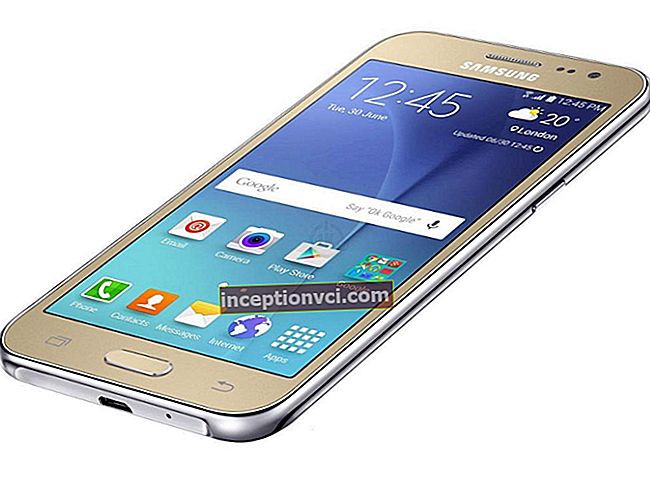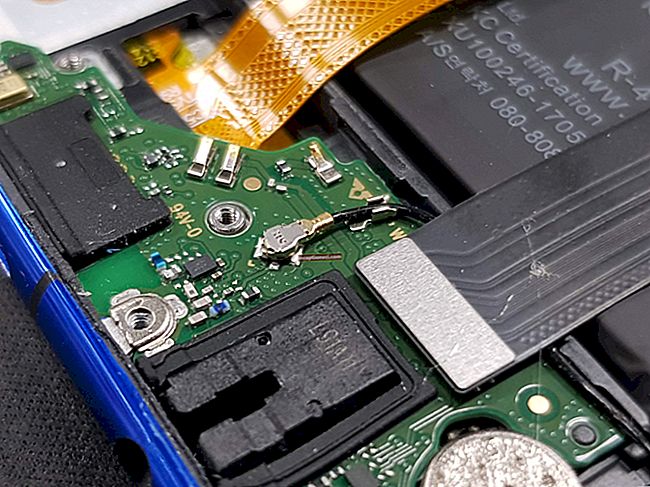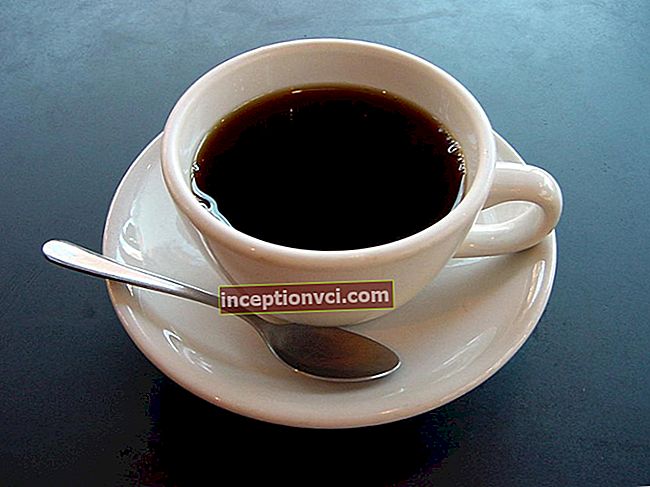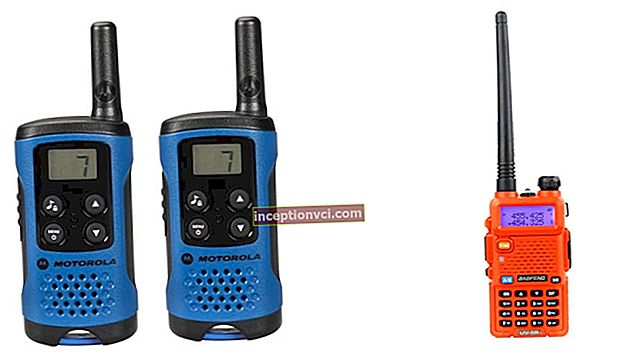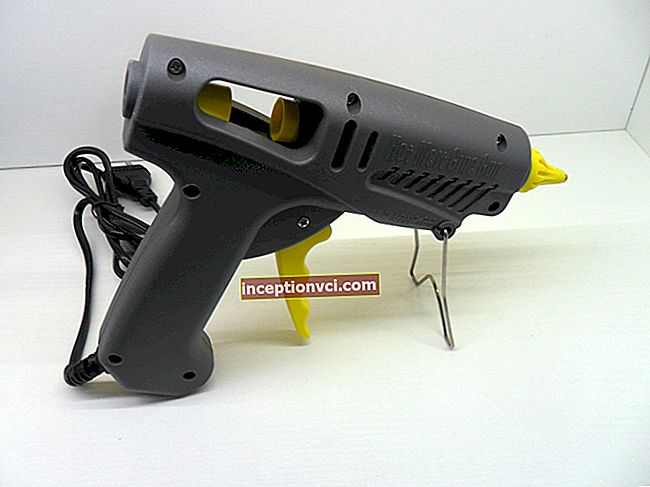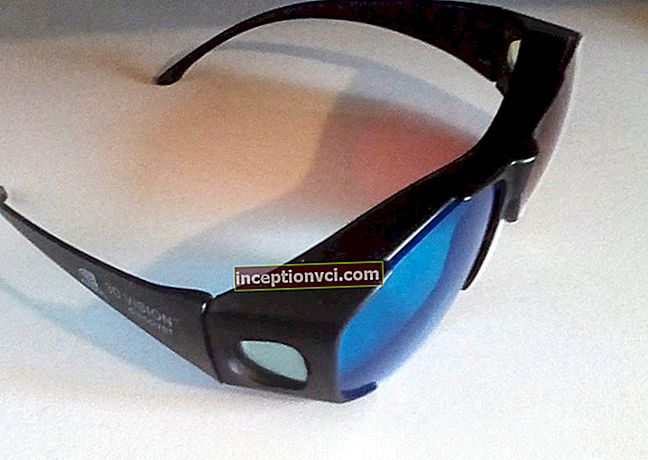I have heard statements that the megapixel race is coming to an end. This, of course, is good if this is the case, because 12-megapixel camera phones do not differ much from 8-megapixel ones (Samsung M8910 PIXON12 versus Samsung I8910 HD are striking examples), and resolution is not the main factor that determines quality pictures. In addition, many users openly say that 5-8 Megapixels is quite enough, and the preference for correct image processing algorithms, good optics and a wide-angle lens still remains.
Let's say 12 Megapixels will remain the final frontier for camera phones, but at least for the period of 2009-2010 it will be so. It is possible that in the future some models will increase their resolution to 15 Megapixels, but in this case it will no longer be a mass market. As well as 12-megapixel devices today. Devices for enthusiasts who, after all, are located in their share of the mass market. At the same time, not only the number of megapixels increases, but the quality also improves, and the devices also have good attributes of "soap boxes". For example, automatic adjustment of Intelligent Shot for LG devices, HD video recording for Samsung devices and even an adjustable aperture value for Nokia devices, due to which it is possible to change the lens aperture and set the required depth of field (DOF). At the end of 2008, the 8 Megapixel line became widespread, including among sensor devices.
The two main representatives of this segment are the Samsung M8910, which is the first commercially available device, and the Sony Ericsson Satio, which is the most anticipated smartphone of 2009. Each of these devices has both its limitations and similarities. It makes no sense to directly compare these devices, because they are located in different segments. Satio is the flagship of the company's lineup, it is a smartphone running the Symbian S60 operating system, and the PIXON12 is only the flagship of the Samsung camera phone segment. These devices are related only by the camera and this is the only point that can be compared.
The Sony Ericsson Satio is also no less interesting in the separation of the camera's capabilities. It is not only the first Sony Ericsson S60-smartphone, but also the third available in the world with the hardware platform OMAP3430. The device, which was waited for a very long time, 9 months after the announcement, which at that time seemed to be an unreal prototype and about which a very active discussion unfolded. Of course, a lot has changed: for example, during the announcement, it was said that Satio (the first name was Idou) will work on Symbian2, and not on the S60 version, which is licensed from Nokia. Unfortunately, this did not happen due to the fact that the platform was not ready for launch, as a result of which SE Satio turned out to be a regular S60 smartphone with only a little customization. The widgets never appeared, although we worked on them, but they will appear in the next devices.


I am very glad that the device uses the third generation OMAP hardware, which is the best solution for today. There is a separate 3D graphics accelerator, lower power consumption, support for high-resolution cameras, and so on. Satio can play unconverted video in case of pre-installed corresponding codecs.
If you think about it, then Satio has few competitors. If we look at the Symbian smartphone as competitors, then they are Nokia N97 and Samsung I8910, if the camera phones are Samsung PIXON12 and I8910. In both cases, there is only one Samsung I8910, which is a direct alternative to the SE Satio, and it will be compared with this device, there are too many similarities.




How should Satio be viewed? Satio is a photographic flagship with a very high quality camera and the best xenon flash. And also the device has a rather interesting appearance, which works under the control of the S60 platform, has a touch screen, a very powerful hardware part. The price for this set is high, but according to some, the price is unjustified. Well, yes, 4600 hryvnia for a phone is pretty much the same, but competitors have comparable prices, so opinions on this account are unjustified.
Will the device be popular? In the home segment - it will definitely be. You just need to understand that this segment is not as voluminous now as, for example, several years ago. SE Satio have been waiting for a very long time, for the company's fans this is the very device that is so necessary. A truly functional SE. Although some limitations are quite significant, Satio is a "really functional SE" with a 12-megapixel camera and a touchscreen display, which, both in cost and in many hardware qualities, is not inferior to its competitors.
Sony Ericsson Satio device specifications
- GSM-module with working bands 850/900/1800/1900 MHz, as well as UMTS and HSDPA with corresponding bands 900 and 2100;
- Operating system Symbian S60 version 5.0;
- Touch, resistive display of 3.5 inches, QHD resolution (640x360 pixels), 16M colors;
- Camera: 12.1 Megapixels (resolution up to 4000x3000 pixels), autofocus, the best xenon flash, face detection, smile fixation, blink elimination, panorama shooting, and VGA video recording at 30 fps;
- Built-in memory with a volume of 100 MB, a slot for microSDHC memory cards (up to a maximum of 32 GB), an 8 GB memory card is supplied;
- Communications: Bluetooth 2.1, USB 2.0, Wi-Fi 802.11 b / g, TV-Out;
- A-GPS navigation module;
- Accumulator with a capacity of 1000 mA * h;
- Dimensions are 111x54x13-18 mm;
- The cost is about 4600 hryvnia.
Ergonomics and design
Sony Ericsson Satio is a candy bar that has an e2e touch screen, symmetrical shape, and original design elements. From the design, the impression is excellent, the Satio looks very nice, as well as futuristic and expensive. The camera shutter adds charm, it slides smoothly, opens with a definite click. You can even say that the design of the camera and the shutter are the main elements in the exterior of the device, for example, I really like this style. There are three color variations and they are all available at the same time. The version with a red color looks just fine live, this is a very correct move, the competitors of the device look outwardly calmer, not flashy. Satio also gains an additional advantage precisely due to the color scheme. Overall, this is the only touchscreen device that doesn't look like the boring iPhone style at all. Sony Ericsson Satio has its own face that will be remembered by many users and beyond.




The build quality of the device is top notch, the device is commercial, so there is no need to worry about the deterioration of the build. All elements of the case are fitted tightly to each other, the dimensions of the device are comfortable, and thanks to the Satio camera shutter it is very convenient to hold during calls. There is also a minus - the camera shutter gets in the way in your pocket, because its thickness is 4 mm, but it is still much more comfortable to carry the Sony Ericsson Satio in your pocket than the Nokia N97. Overall dimensions do not feel monstrous, everything is within the normal range. Well, at least compared to the rest of the flagships.
Most of the front part of the case is occupied by a large display, while the distance to the edges is not very great. In fact, the display determines the size of the device and its appearance. The display measures 3.5 inches, it is also elongated and has an aspect ratio of 16: 9. The display looks optimal for everything, this aspect ratio made it possible to obtain a relatively small device in width while maintaining the maximum diagonal.It is the large width that becomes a disadvantage for many devices, even the iPhone is noticeably wider, as a result of which it sits worse in the hand. The display is not recessed into the body, the device has a hint of finger control, although a stylus is provided. The stylus is attached to the body on a strap just like in the Nokia N97. The display is protected by plastic. Quite an ordinary resistive display, but with very good sensitivity. Above the display is a light sensor, a proximity sensor and a front-facing camera for conversations.




On the left side there is a slot for microSD memory cards under a flap, above which there is a lock slider, which is very convenient. The device has one single connector on the case, which is traditional for SE - fast-port. Unfortunately, there is no 3.5 mm input for connecting a headset, for this you will have to use an adapter. This is actually the biggest disadvantage for a multimedia device, because it was possible to make a truly versatile device. But, unfortunately, the company deliberately limited the audience of consumers, preferring to call the SE Satio a photographic device.


On the right side there are camera controls, namely: start / shoot, zoom buttons, which also play the role of adjusting the volume, switching the mode in the photo / video, going to the gallery. This is the optimal set that is typical for a photographic device. At the top is the speaker, as well as the off / profile change key. The speaker is located as conveniently as possible, the sound does not overlap at all. There is no stereo effect though. The volume is normal, but slightly lower than that of the N97.




The cover is securely fastened, there is no backlash. The surface is glossy.








Comparison with Nokia N97






Comparison with Apple iPhone 3GS



Comparison with Samsung I8910 HD


Comparison with Nokia N900


Display
As mentioned earlier, the display is large, 3.5 inches in size, which is 46x82 mm, elongated in length, has an aspect ratio of 16: 9, which is not the maximum for Symbian smartphones, but enough to work quite comfortably. Thanks to the slightly reduced display, the dimensions of the device itself are within the normal range. Satio is the smallest of all flagship smartphones. Due to the high resolution of the display, which is 640x360 pixels (QHD format), the image looks great, TFT technology is used, although it would be better to use AMOLED. In short - a good display, which is identical in size and resolution to that of the N97, but the quality of the Satio is noticeably higher.
Comparison with N97








As you can see from the pictures, the display of the N97 looks a little worse due to the low saturation, as a result of which the colors are displayed less naturally. The device has a light sensor that controls the intensity of the display backlight, as well as a proximity sensor. When the device approaches the face during a call, the display is blocked, the description of this function is standard and it is used in many touch devices.
The display will fade when exposed to sunlight. The information remains visible, but the colors fade, the N97 has an advantage in sunlight.
Battery
The Sony Ericsson Satio comes with a 1000 mAh battery, which is 1.5 times less than that of its competitors. The hardware platform of the SE Satio is similar to the Samsung I8910, which runs day and night, and the same is true for the Satio. Optimizing energy consumption has always been a squeak of the company, but still the Satio sits down pretty quickly. It also lacks online widgets, which have a pretty decent effect on the power consumption of the I8910 and N97. Maybe in subsequent firmwares this flaw will be corrected, but this is the bottom line: one day of work, with the condition of listening to music for about 2-3 hours a day, using a camera, Wi-Fi, GPS, and so on. The device will pull out for 2 days only in a strictly economical mode.
Communications
There is a traditionally integrated Wi-Fi module.There is also a WLAN Wizard, which is a simple assistant in setting up connections. There are not very many options, if there is a network, the program offers to create a connection, it is possible to define an access point that will be used by default, there is also a network filter. Security standards - WPA, WEP, and WPA2. The settings also indicate when to scan for WLAN networks. There is also DLNA certification, which allows you to open access to your content, which is located on your smartphone, and it is also possible to play content from other compatible devices. After setting, a menu item with the name "Show via home network" will appear in the Gallery, thanks to which you can display or play the necessary files on another device. There is a special application for these manipulations. The process of setting up, as well as sending content, is straightforward and simple.


The device has a USB standard - 2.1, the data transfer rate of which is approximately 4 Mb / s. There is also a Mass Storage mode. You can choose what to use the device - PC Suite, Media Player, Image Print or disk drive. Both the memory card and the built-in memory are displayed as removable disk.




Bluetooth, according to the specifications - version 2.0 + EDR, there is support for all major profiles.


Information input and management
The display of the Sony Ericsson Satio device is resistive, similar to that of the N97. Work is possible both with a stylus and fingers, as well as other objects. But the difference with the capacitive display Samsung I8910 is significant, the display sensitivity is clearly lower, although it is at a good level. If you're happy with the N97's display, then the Satio shouldn't be a problem.
Sony Ericsson Satio offers four different ways of entering text, the choice of which depends on the user's preferences, as well as on the program in which the information is entered.
MiniQWERTY keyboard. Everything is clear from the name, the standard keyboard is minimal in size, but with all this, all the necessary letters of the desired alphabet are located on it. To use symbols and numbers, you must switch the mode with a special key, and then go back. The same must be done to enter symbols of a different alphabet. In the case of working with the hardware keyboard of Nokia E71, for example, all these actions can be performed much faster and easier. Virtual buttons in our case are small, it is not realistic to type text with one hand. The number of errors is large, it is not so easy to hit the keys. Fortunately, the stylus or long nails saves. The MiniQWERTY keyboard is available both horizontally and vertically. At the same time, in the horizontal view, the keyboard can be dragged to the desired place on the display, so that the entered information is not obstructed by the keyboard. The field for entering information is large, the lines of the typed long text are quite clearly visible.

FullScreen QWERTY. It is used only in horizontal mode, typing with one hand is also unrealistic, due to the width of the device, to collect a large amount of information, be sure to take the device with both hands. The virtual QWERTY in the device is pretty good, it also resembles the keyboard in the Nokia 5800, but a little larger. It has good response, normal size of buttons, work without tension is possible. Although the Samsung I8910 has a better keyboard, the display technology takes its toll. The downside is that the input field is not very large, only a few short phrases are visible, but to insert other characters you have to switch to the required mode. The advantages of this input include the availability of FullScreen QWERTY from any application. The appearance of the keyboard switches after pressing a separate button, it is possible to choose exactly the type that interests you at the moment. This keyboard is not caused by lightly flipping the device horizontally, which is very strange.



Alphanumeric keypad. This is an ordinary keyboard with numbers and symbols located on it, which is very similar to the hardware one and has the same principle of operation. But still, it is not very easy to reach all the buttons with the thumb of one hand, sometimes you have to intercept the device. The absence of a hardware delete key greatly reduces the speed of typing information.

Handwriting. This function is for handwriting recognition. It turns out to enter characters, as well as punctuation marks with a finger, which indicates a good implementation, but with a QWERTY keyboard, this method of entering information is not a priority, and in general few people use it. There is also word substitution, a small pop-up window appears, in which there are several options, one of which you can choose. You can also adjust the writing speed, the delay during handwriting recognition, and the width and color of the brush.




Sony Ericsson Satio does not have a hardware keyboard, there is only a touchscreen display, from which all actions are performed. When you select any items, during various touches to the display, you will feel a recoil, this is a weak vibration, similar to many touch devices. Of the traditional keys, only accept / release and menu remained. The scrollbars are large, so the absence of a joystick is not very critical, but sometimes errors do happen, although this is rare. There is no kinetic scrolling in Satio. Maybe this feature will be added in new firmware, we'll find out over time. The device is easy and simple to handle with one hand, the virtual keys of the menu, options and icons are quite large and do not cause any complaints. In most menus, the selection of an item is a single touch, and a double touch is used to confirm and then open. You get used to such management quickly.
Hardware part
For the first time, Sony Ericsson and the second time in the Symbian segment have used the powerful OMAP3430 platform, which has its own processor clock speed of 600 MHz. A hardware 3D graphics accelerator is also provided. The device works very fast, there are no delays. Even rewinding large video files is a split second. The smoothness of operations and the speed of work are amazing, this platform is the best solution in the future. Why the OMAP3430 does not include preinstalled video codecs is not entirely clear. Unfortunately, Satio cannot play DVD rips. Movies will have to be converted to mp4 format before enjoying their viewing.
The amount of available RAM after the system start is approximately 120 MB, while the total amount is 256 MB. This is the maximum for Symbian smartphones, which is a new standard, because the previous generation used 128 MB of RAM and, as a result, there were reports of insufficient RAM. Satio eliminates such potential problems.
The memory allocated for running applications and the size of the Java application are unlimited. The built-in memory is about 70 MB, which is intended for storing contacts, records and other things, and the built-in flash memory array is absent in the Satio. Compared to the memory of the N97, which is 32 GB and the Samsung I8910 at 8/16 GB, this is an annoying omission. The device uses microSDHC memory cards, which can have a capacity of up to 32 GB, an 8 GB memory card is supplied with the device. For the first time it is enough, but if you plan to use the device for watching movies, listening to music, then you should think about a larger memory card. Still, it’s a pity that competitors are in the lead in terms of built-in memory.

There is also an accelerometer in the device, which is designed to automatically rotate the interface while changing the position of the smartphone, it works quite smoothly and without any delays. There are also functions to muffle calls.It is possible to disable the accelerometer.


Software part
Sony Ericsson Satio is implemented without widgets. Instead, the company has developed its own skin that extends the look of the embedded desktop. Satio has 5 screens, like in Google Android, the central screen is actually the desktop, the other 4 are occupied by applications:
- Contacts;
- Application shortcuts;
- Photo gallery;
- Browser bookmarks.
It is possible to add elements to each screen - new shortcuts to various applications, contacts, bookmarks of sites, but, in truth, there is not very much practical use. For example, I only liked the panel with pictures, in which you can view pictures, the gallery itself looks good, and there is also support for kinetic scrolling. This is a convenient replacement for the standard gallery, although there is no sorting, all pictures are located in one feed.






At the bottom of the screen there is a strip on which there are 4 virtual keys to which the calls of the telephone dialing application, menus, messages, and also search are assigned. Slightly higher is the player window, on which, during music playback, the album cover is displayed along with virtual playback control buttons. But in the upper part of the display there are only information about the signal, indicators of running processes, and the battery charge level.
In addition to its own shell, the Sony Ericsson Satio smartphone has traditional panels, types of desktops, of which there are 4 pieces. This line with the quick launch icons located on it, 4 large or 6 small ones, or a vertical line with a drop-down list. With this setting, SE panels are not displayed.






The fifth edition Symbian S60 platform does not differ from the one used in the N97, I8910. Only a few points have been redesigned. The overhauls relate to icons, applications, camera interface, gallery, etc., but everything is mostly familiar and familiar from other touch devices running Symbian. Only the appearance of the interface is different, the icons have become more original and attractive, some new applications have also been added, for example, the same branded gallery SE. We will consider all new applications in the order in which they appear.








The main menu can be displayed as a 3x4 matrix or as a list, the icons are drawn just fine, they look great, and the design of the menu itself is generally one of the best. There is a traditional function to organize the menu, as well as create new items in it. The standard set of themes consists of 3 pieces, each of which is good, has its own icons and desktop design.


Satio differs from other S60 smartphones not only by a redesigned Sony Ericsson-style desktop, but also by a proprietary multimedia menu, which is made in the same style as in A200-based phones, it is a viewer with a Sony PSP-style interface and along with it, a motion sensor is involved, which automatically changes the orientation of the screen. Thanks to the large display, it is very convenient to work with media data, there are Video, Music, Photo items in the menu with clear purposes. The interface itself is rendered perfectly, there is also animation in the menu during the transitions between items, and the speed of work remains at its best. The design of this interface does not depend at all on the positioning of the device, the design is similar to all Sony Ericsson models, even on devices running Symbian and Windows Mobile. The multimedia menu can be called the hallmark of all SE devices.




The images are viewed perfectly, they are sorted by month. There is the ability to run a slide show, edit pictures and other functions.


GPS navigation
The device has a built-in GPS module, but in comparison with other models, the software part of the navigation has changed, instead of Wayfinder Navigator, WisePilot is now used.This application is not much different in its functionality from the same WayFinder, but the interface is more pleasant, the maps look better and more detailed. The map provider is Navteq. Today maps from Navteq are the most relevant and detailed. Most of the functions are standard, there is a search by addresses, locations, coordinates, there is also a list of favorites and the ability to get information about the weather.






During the start of the program, a cold start takes about 5 minutes, which is quite a standard time. Satio has the A-GPS function, like all modern models that have satellite navigation support, which allows you to reduce the time of binding to satellites, as well as the positioning itself, at this time the coordinates come from the operators, which helps a lot in places with poor reception.
Various functions are available that are sufficient for comfortable navigation. In the menu, the Search item allows you to search for points of interest, also called POIs, and which include restaurants, banks, attractions, car repair shops, and so on, according to various criteria, for example, the nearest location, the address that must be entered in the Latin alphabet, and other points. Each POI on the map looks like a corresponding icon, which is very clear. It is possible to set the route as the shortest possible, and the fastest. The program also has a Pedestrian mode, which is very important. Simulation of the route is possible.




It is possible to add POIs to an existing route when navigating. You should not enter locations manually, because the points of departure or destination can be marked on the map. There is an opportunity to save a part of the map as an image, and then send it via MMS. Additional features include weather, voice guidance and traffic information.




Applications
Browser... This item has been slightly revised in comparison with Nokia, the browser is visually slightly different, although the functions and characteristics are the same. The browser supports the following graphic formats: JPEG, GIF, PNG, WBMP, BMP. There is support for audio formats MP3, WAV, MIDI, Real Audio, EACC +, ACC, AMR-WB, AMR-NB. The browser uses security protocols and algorithms that ship with the S60 platform and Symbian operating system.


You can view the Web page in the form of a minimap, during this you can move around the page, and a red frame marks the area that will increase after switching to the standard view mode. The browser has a very good speed of work, there are no "slowdowns" during the transition to this mode, but in order for the minimap to be displayed beautifully, you need to wait a few seconds. In addition, there is a setting that allows you to display the minimap while turning the page, which will be located on top of the main image. In this case, the minimap is transparent and helps to understand the location on the page well.




The bookmarks are well thought out and quite sufficient functionality for normal work. There are two types of bookmarks in the browser: regular and responsive. Regular bookmarks are created by the user, adding the desired page to the database of bookmarks at his discretion. Responsive - created automatically based on browser history, and in this case, the most visited sites are at the top of the list. It is possible to copy adaptive bookmarks to regular ones. It is possible to send both types of bookmarks via SMS in the form of regular links.
In the Browser it is possible to work in both horizontal and vertical orientations. When the device rotates, the interface rotates automatically, there are no delays. The display with this resolution is very good for browsing the Internet, the need for horizontal scrolling is rare. There are zoom settings for which you only need a couple of taps to the display. The function key calls up a window in which all basic settings are displayed, to which access is most convenient.The great advantage of the browser is the complete adequacy of understanding the Flash technology, such objects load quickly, no problems arise. In general, the browser is pretty good, although it is not perfect, but very close to it.




Search... There is a search application in the device, the application combines both the search in the device and the Internet search through the Google service. The implementation is similar to the S60 in Samsung or Nokia smartphones. The search is carried out in different categories, the list of which is customizable, you can either leave all the preset criteria, or limit yourself to the ones you need.
Office... QuickOffice software is designed to view MS Office files: Word, Excel, PowerPoint. It is possible to view files of different versions of Office from 97 to XP, but still there is no full compatibility. There is also no function of editing documents, for editing you will need to install a full version of QuickOffice.
Games... The set comes with 2 games - Sudoku and a rather interesting game Labyrinth, which is well known from HTC communicators, in which you need to control the ball using a motion sensor. The game has an excellent portrayal and in itself pleases.
TrackID... This application is a music detection service, which is a proprietary feature of Sony Ericsson devices. With this program, you can record a small part of the song, after which it is transferred to the Internet. After that, information about the artist's name and the title of the song, if any, is returned as a message. If found in the database, the subsequent purchase of the composition is possible. This service is interesting to many users, the main part of which is young people. Docking with an integrated FM tuner is also possible.


Uploading photos to the web... By default, a list of preferred servers is already installed, which include Blogger and Picasa, this application greatly simplifies the uploading of content to the Internet, because you do not need to enter the addresses of services in the browser, and you do not need any special settings, to work you just need to specify your data.
Multimedia capabilities
The graphical interface of the MP3-player is non-standard, it has undergone significant customization, thanks to which it was brought into line with the proprietary multimedia menu. The player is pretty nice, in the center you can see the album cover of the song that is playing, and below there are large control keys and function calls. The last key is the pop-up menu, which is designed to work with compositions, after which there is a volume control, and then the minimization of the player. At the top of the display is the model information.




The player is designed very, very nicely, but it has a small number of settings, which include only the most necessary, the company again emphasizes the positioning of Satio, which is not musical. The device lacks equalizers, sound settings, visualization, etc. Additional functions include sorting according to various conditions and playlists or so-called playlists.


Sound quality is adequate. Unfortunately, it is much inferior to both the I8910 and the N97, this is a truly non-musical solution. Quiet sound, almost no low frequencies, as a player this device is not very suitable for use. The set comes with the most common headphones, and there is no adapter, which is upsetting. To listen to music in the best quality, you will definitely need other headphones with better sound quality. The operating time after fully charged in player mode is approximately 12 hours.
The radio is simple, austerely designed, the headset acts as an antenna.
Camera
The camera of the flagship SE is top-end, it uses a 12.1 Megapixel Sony Exmor matrix, a fairly powerful xenon flash, and much more. Camera characteristics:
- CMOS-sensor with a resolution of 12.1 Megapixels;
- Aperture ratio is 1: 2.8, focal length is 5.9 mm;
- The maximum photo resolution is 4000x3000 pixels.
The camera lens is protected by a relatively massive shutter, the camera starts up in 2-3 seconds, focusing takes about 4 seconds, about 2 seconds. spent on saving photos with maximum resolution. The display in the viewfinder mode is not sluggish, the image refreshes quickly. The graphical interface is familiar from the rest of Sony Ericsson's touchscreen photography solutions.




On the left, there are large settings icons, which include:
- setting the shooting mode, the list of which includes 8 scenes;
- operating mode - snapshot, burst shooting, smile snapshot, panorama, soft focus;
- flash control;
- setting the plot, there are 14 options in the list;
- setting the brightness in the range from -2 to +2.
The necessary settings are available immediately, with one touch, a very user-friendly interface, but with the exception of one small moment. In addition

